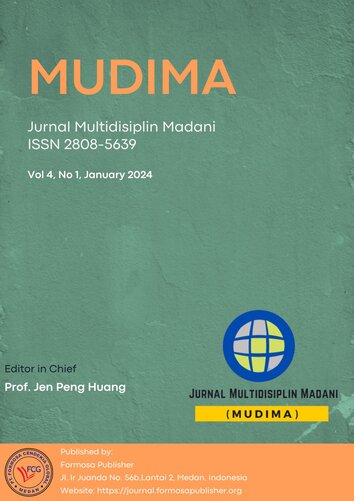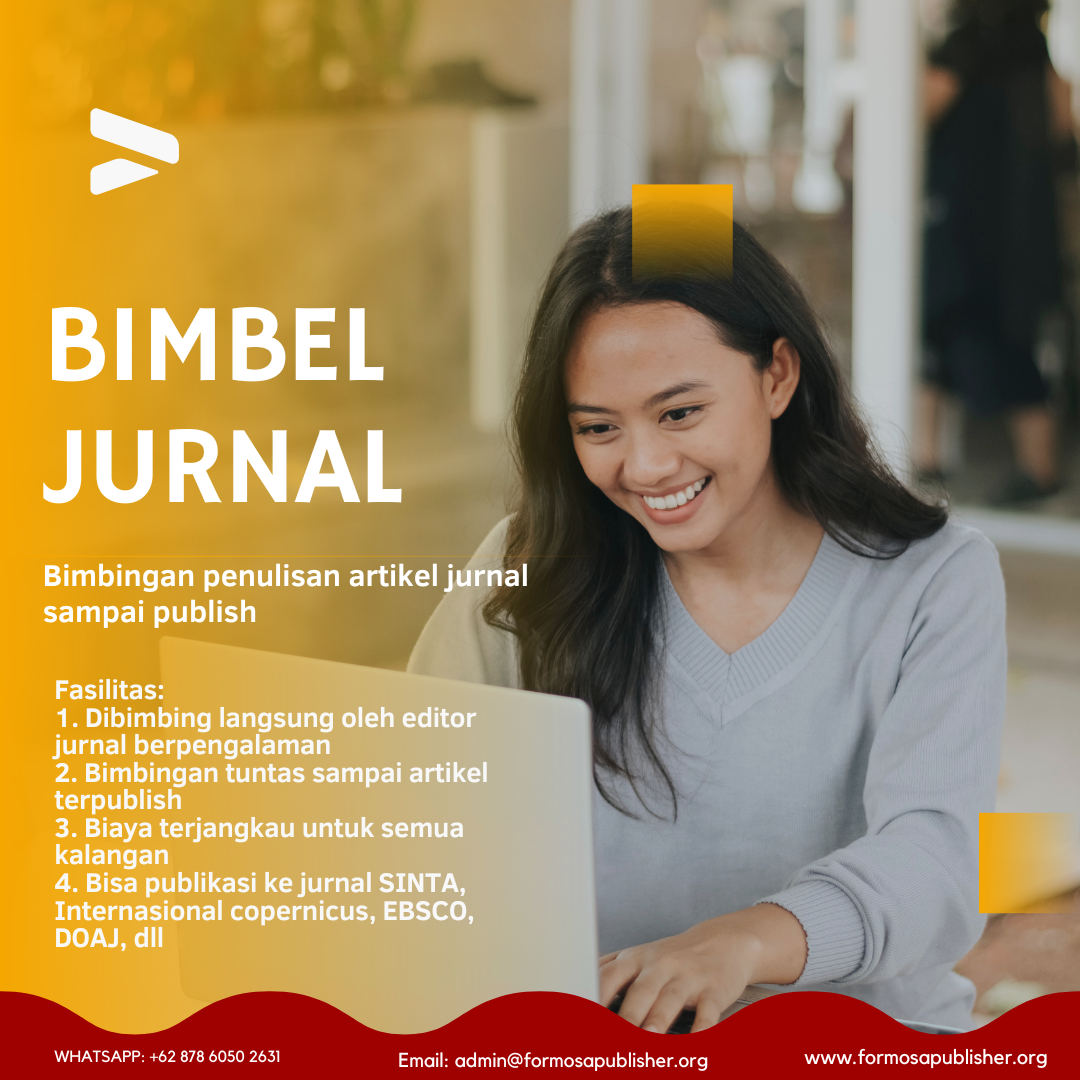Tensile, Bending Testing on Straw Fiber Composites 00 and 900 Angle Orientations with Polyester Matrix
DOI:
https://doi.org/10.55927/mudima.v4i1.7731Keywords:
Straw, Bending, Composite, Tensile Strength, Fiber, Fiber Length, PolyesterAbstract
Currently, the development of science and technology continues to develop in all fields, such as vehicle construction, building construction, industry, and also the field of materials engineering, especially composites. Composite materials generally consist of two elements, namely fibers as a filler and a binding material for these fibers which is called a matrix. In composites, the main element is fiber, while the binding material uses polymer material which is easy to form and has high binding power. The aim of this research is to determine the effect of straw fiber length oriented at 0° and 90° angles in polyester matrix composites on tensile and bending strength. The influence of straw fiber length provides a value for maximum tensile strength with a value of 28.604 Mpa with a fiber length of 15 mm and an angle of 0°. Meanwhile, the angle direction of 900 has a greater value at a fiber length of 10 mm, amounting to 19.619 MPa. The influence of straw fiber length provides a value for maximum bending strength with a value of 86.29 MPa with a fiber length of 10 mm and an angle of 0°. Meanwhile, the maximum tensile strength value at an angle of 900 with a fiber length of 15 mm is 40.02 MPa
References
A. Saidah, S. Sulilowati, Endah, and N. Yos, “Pengaruh Fraksi Volume Serat Terhadap Kekuatan Mekanik Komposit Serat Jerami Padi Epoxy Dan Serat Jerami Padi Resin Yukalac 157,” J. Konversi Energi dan Manufaktur UNJ, pp. 96–101, 2018.
A. Saidah, S. E. Susilowati, and Y. Nofendri, “TARIK KOMPOSIT BERBAHAN SERAT RAMI EPOXY SEBAGAI BAHAN ALTERNATIF KOMPONEN OTOMOTIF,” vol. D, pp. 191–197, 1945.
B. Widodo, “ANALISA SIFAT MEKANIK KOMPOSIT EPOKSI DENGAN PENGUAT SERAT POHON AREN (IJUK) MODEL LAMINA BERORIENTASI SUDUT ACAK (RANDOM),” J. Teknol. TECHNOSCIENTIA, vol. 1, no. 1, pp. 1–5, 2008
C. N. Nasuha and A. Fikri, “PENGARUH PANJANG SERAT JERAMI TERHADAP TEGANGAN TARIK PADA KOMPOSIT UNTUK APLIKASI MOBIL LISTRIK,” vol. 1, no. 1, pp. 5–8, 2020.
E. Apriani, “ANALISA PENGARUH VARIASI KOMPOSISI BAHAN LIMBAH DARI SERAT KELAPA MUDA, BATANG PISANG, DAN KERTAS BEKAS TERHADAP KEKUATAN BENDING SEBAGAI PAPAN KOMPOSIT,” ENGINE, vol. 1, no. 2, pp. 38–46, 2017.
H. Purnamaningsih, S. Indarjulianto, N. Alfarisa, and Yanuartono, “Potensi jerami sebagai pakan ternak ruminansia,” Ilmu-ilmu Peternak., vol. 27, no. 1, pp. 40–62, 2017.
J. Oroh, F. Sappu, P, and R. Lumintang, “ANALISIS SIFAT MEKANIK MATERIAL KOMPOSIT DARI SERAT SABUT KELAPA,” Tek. Mesin, Univ. Sam Ratulangi Manad., 2013.
M. B. N. Rahman and B. P. Kamiel, “Pengaruh Fraksi Volume Serat terhadap Sifat-sifat Tarik Komposit Diperkuat Unidirectional Serat Tebu dengan Matrik Poliester,” Ilm. Semesta Tek., vol. 14, no. 2, pp. 133–138, 2011.
M. Yani and F. Lubis, “Pembuatan dan penyelidikan perilaku mekanik komposit diperkuat serat limbah plastik akibat beban lendutan,” Progr. Stud. Tek. Mesin Fak. Tek. Univ. Muhammadiyah Sumatera Utara, vol. 4, no. 2, pp. 77–84, 2018.
R. Rodiawan, S. Suhdi, and F. Rosa, “Analisa Sifat-Sifat Serat Alam Sebagai Penguat Komposit Ditinjau Dari Kekuatan Mekanik,” Turbo J. Progr. Stud. Tek. Mesin, vol. 5, no. 1, pp. 39–43, 2017, doi: 10.24127/trb.v5i1.117.
S. O. Yasa, N. P. N, and D. Rihendra, “PENGARUH ORIENTASI SERAT TERHADAP KEKUATAN IMPAK DAN MODEL PATAHAN KOMPOSIT POLYESTER BERPENGUAT SERAT KELAPA ( COCOS VERIDIS ),” J. Pendidik. Tek. Mesin Undiksha, vol. 6, no. 1, 2018.
Downloads
Published
How to Cite
Issue
Section
License
Copyright (c) 2024 Gugun Gundara, Nifal Nugraha, Acep Wagiman

This work is licensed under a Creative Commons Attribution 4.0 International License.
































